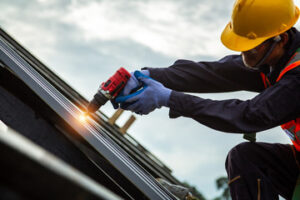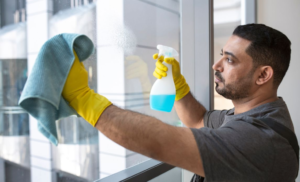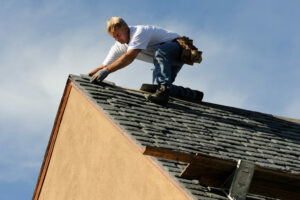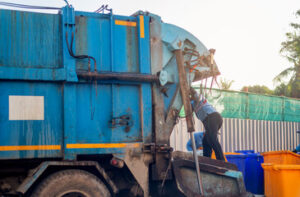Metal Roofing Kalispell has become a popular option for residential homes. Its durability, energy efficiency, and attractive curb appeal are just some of its benefits.

In addition, some homeowners in areas prone to heavy snowfall find that they can get a homeowner’s insurance discount for using a metal roof. Nonetheless, it is important to understand the pros and cons of this type of construction.
Metal roofs are known for their durability, longevity and low maintenance costs. In fact, they can outlast asphalt shingles by up to 70 years. This longevity makes them a great investment for both new construction and roof replacement projects. However, the lifespan of any roofing material is dependent on many factors, including local weather conditions, maintenance practices and installation methods. A professional roofing contractor will help you assess these factors during a free consultation.
Unlike shingles, which can easily crack and crumble under harsh weather conditions, metal roofs are incredibly durable. They are built to resist rust, corrosion and extreme temperatures. They also have superior wind resistance, with some models tested to withstand wind speeds up to 140 mph. This resilience can give you peace of mind during storm season, while also potentially saving you money on homeowner’s insurance premiums.
The longevity of your metal roof can also be enhanced with proper maintenance. Regular inspections, proper cleaning techniques and a protective paint finish can all contribute to a longer lifespan for your roof. However, the type of metal used in your roof can also impact the overall durability. For example, copper roofs are notorious for their durability and longevity, while some types of steel can rust more quickly than others.
Another factor that affects the durability of your metal roof is the type of climate you live in. For example, areas with frequent snow and high winds can take a toll on any type of roof. In these cases, you should consider a heavier gauge of metal. It’s also important to know that heavy hail can dent or even damage some types of metal roofs. Pea-sized or dime-sized hail isn’t usually a problem for these types of roofs, but larger hail can damage the surface.
Another reason to consider a metal roof is the protection it offers against fire. A metal roof’s ability to resist flames is a valuable safety feature for commercial and industrial properties that store flammable materials. It can also save building owners on energy costs by reflecting more sunlight and reducing indoor temperatures.
Energy efficiency
Metal roofs are designed to save energy by reflecting the sun’s rays. They also help regulate a building’s temperature. This is a great benefit for those who live in areas with extreme weather. Unlike asphalt shingles, which can easily get ruined by large hail, steel is harder and more resistant to damage from such weather.
A metal roof’s ability to reflect heat helps lower the cost of cooling a home or business during the summer. In fact, according to studies conducted by the Oak Ridge National Laboratory and the Cool Metal Roofing Coalition, reflective metal roofs can save up to 40% in energy costs in the summer and reduce air temperatures by up to 12 degrees Fahrenheit. Combined, these benefits result in less dependence on fossil fuels and reduced overall environmental pollution.
The roof’s color choice has a more important role to play in energy efficiency than one might imagine. For example, a white roof reflects the sun’s rays more efficiently, which can significantly decrease cooling costs. Similarly, dark colors tend to absorb more heat than their lighter counterparts. The key is to consult with a professional before selecting a color for your metal roof.
In addition to its durability, low maintenance and high energy efficiency, metal roofing is made from recycled materials. As a result, it has a very low carbon footprint and can be recycled at the end of its lifecycle for new construction. This is a great feature for those who want to contribute to a greener world.
As the demand for sustainable building materials continues to increase, many people are turning to metal roofing. Its long-lasting design and multiple style options make it an ideal alternative to traditional shingle roofing. With the rising prices of gasoline and electricity, people are looking for ways to improve their homes’ energy efficiency. Fortunately, a metal roof is an eco-friendly, energy-efficient, and sustainable solution to the problem.
While many people are focusing on the aesthetics of their homes, it’s also essential to pay attention to the quality of the roof. A poor-quality roof can cause serious damage to the interior of a house. This can be costly for the homeowner and will require repairs or replacement of expensive components. To prevent this, it’s important to choose a quality roofing contractor.
Style options
Metal roofs are available in a wide range of styles to complement any home’s architectural vision. Some are designed to resemble shingles, clay tile, shakes or standard standing seam panels. Others have a sleek and contemporary look. Many offer the energy efficiency and durability that make them popular with homeowners. They also come with a variety of color options to suit any building’s aesthetic.
When choosing a metal roof, consider whether you prefer exposed or concealed fasteners. Exposed fasteners are visible and create a more industrial look. They can be cheaper, but may not last as long as concealed fastener panels. Concealed fasteners are attached through clips or rails for a more seamless appearance. A professional contractor can help you decide which option is best for your home or business.
A metal roof can be constructed from a number of materials, including steel (galvanized or galvalume), aluminum and copper. It can be coated with a variety of finishes, including paint, Kynar coating, and stone granules. A Kynar coating preserves the metal’s shiny surface and resists scratches and other damage. It also provides added protection against corrosion and extreme weather conditions.
Another benefit of metal roofing is its energy efficiency. Its reflective capabilities help to reduce cooling costs by reducing the amount of solar radiant heat that is absorbed. Moreover, specialized metal roof coatings can be applied to enhance this effect.
While metal roofs are not as common as traditional shingles, they are gaining popularity as a durable and stylish alternative. These roofs can increase the value of your property, reduce energy bills and add beauty to your home. They are also a great choice for commercial buildings because of their durability and longevity.
It is important to consult with a qualified contractor when installing a metal roof, as the process can be complex. It requires extensive knowledge of building codes and a high level of skill. Some types of metal roofs are easier to install than others, but all require a lot of attention to detail. A good contractor will take the time to understand your needs and provide recommendations based on experience.
Maintenance
It’s no secret that metal roofs last a long time, but they do require some maintenance to ensure their longevity and protection. A properly maintained metal roof will help to prevent leaks, rust and other damage to your home or business.
Whether your roof is standing seam or screw-down, it will need regular inspections and cleanings. In addition to a periodic clean, your roof should be checked for any dents or other signs of damage and the fasteners must be tightened. Loose or missing fasteners can leave your roof vulnerable to water infiltration which may cause structural and interior damage.
In addition to checking the fasteners and panel seams, a metal roofing company will also look for any signs of wear and tear around any roof penetrations, such as vents, chimneys, skylights or other fixtures. These areas can be a source of water infiltration that can lead to mold or mildew growth and other problems. Inspecting the sealant and flashing in these areas will prevent moisture from seeping into your building, and replacing any deteriorated caulking or flashing will keep your roof watertight.
While walking on a metal roof is not recommended for both safety measures and damage control, regular inspections can be done from the ground. It’s important to remember that any type of ladder should only be used for short periods of time, and it is always a good idea to have a spotter to hold the ladder. Walking on a metal roof can scratch or dent the surface, and it can also leave footprints on the paint which can scuff the finish.
If you do plan to walk on your roof, it’s important to avoid the panels and any other exposed fasteners and structural members. You should also be careful not to walk on any flat panels near or over support purlins, as this can cause low spots and water ponding. Finally, you should never walk on the eave or panel endlaps, as this can cause permanent damage.
Many metal roofs require a light coat of paint to protect the surface and extend its lifespan. Repainting your roof every few years is a great way to add curb appeal to your property and improve its resale value. A good roof maintenance program will include the cost of any needed painting or other cosmetic enhancements.






